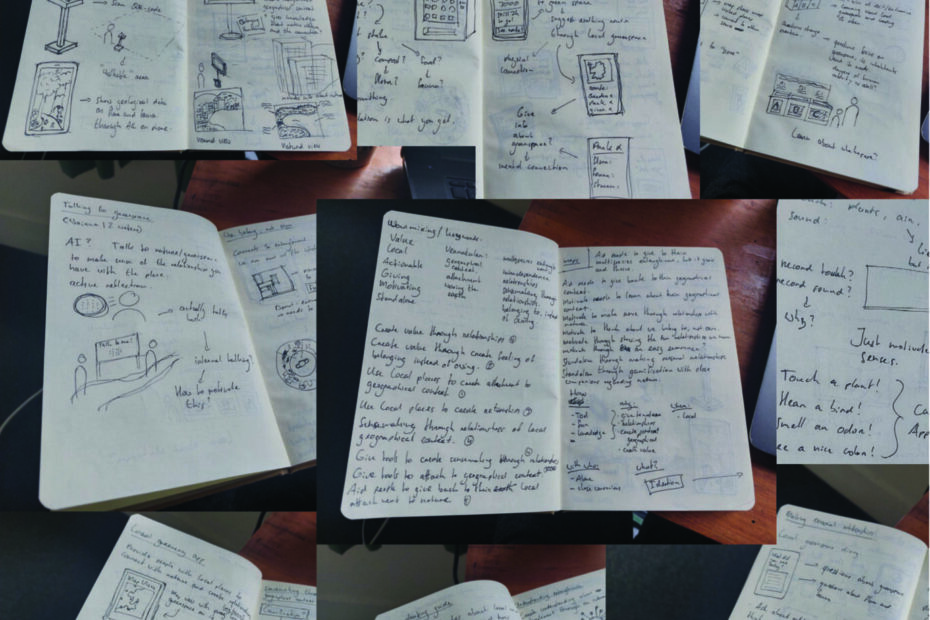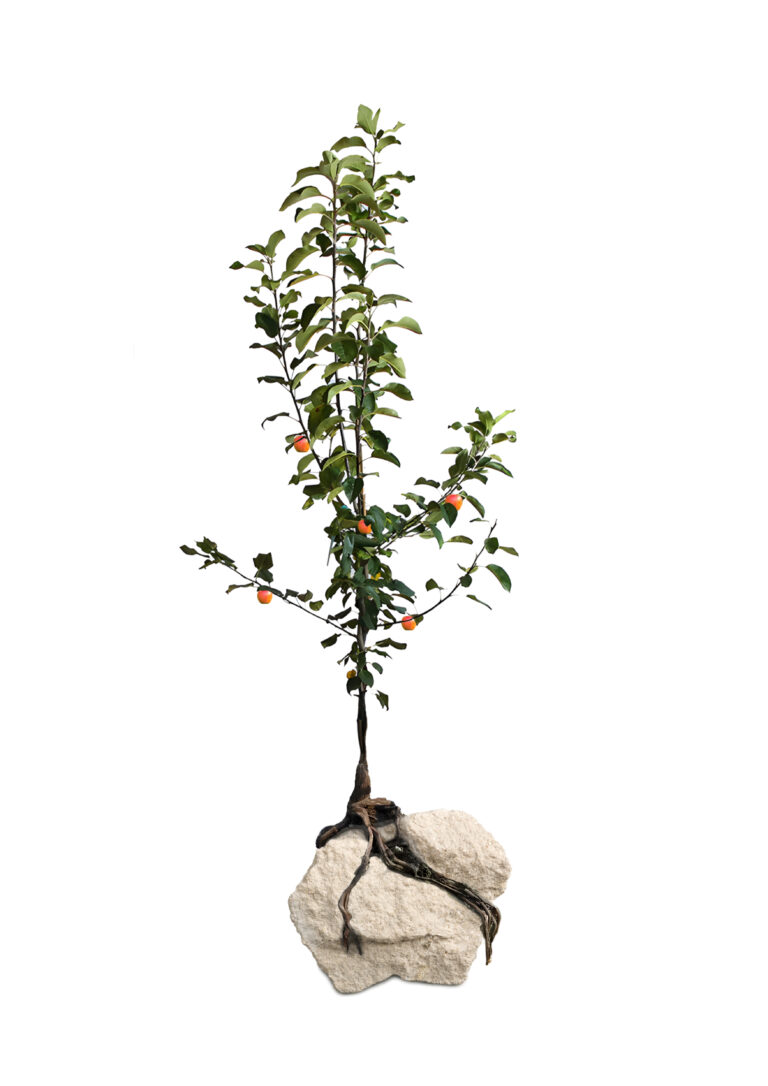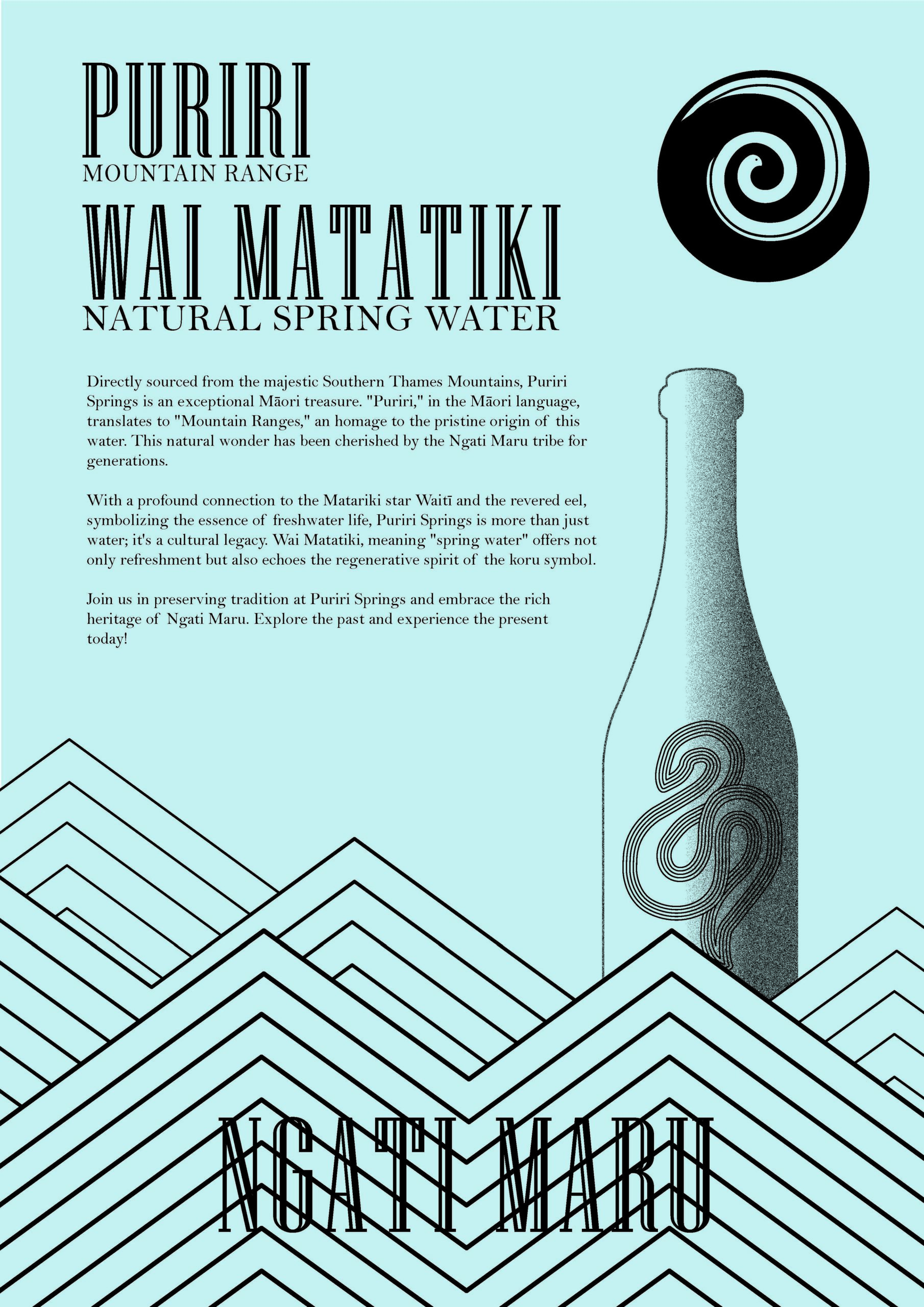Systemic Explorer / Speculative Envisioner / Strategic Planner
User Experience Design & Mātauranga Design
Victoria University Wellington, New Zealand
Design Projects - 2023
Improving the human-nature relationship in urban areas & including Māori worldviews in design
UX design project to mediate relationships between humans and the environment, reframing user-centred design through an ecological lens through focusing on how digital design can foster reconnection with nature. Furthermore, I engaged with Māori knowledge systems, which emphasised the integration of values, materials, and place in design. This experience strengthened my commitment to posthuman and Indigenous approaches, positioning design as a practice of collaboration with, rather than dominance over.
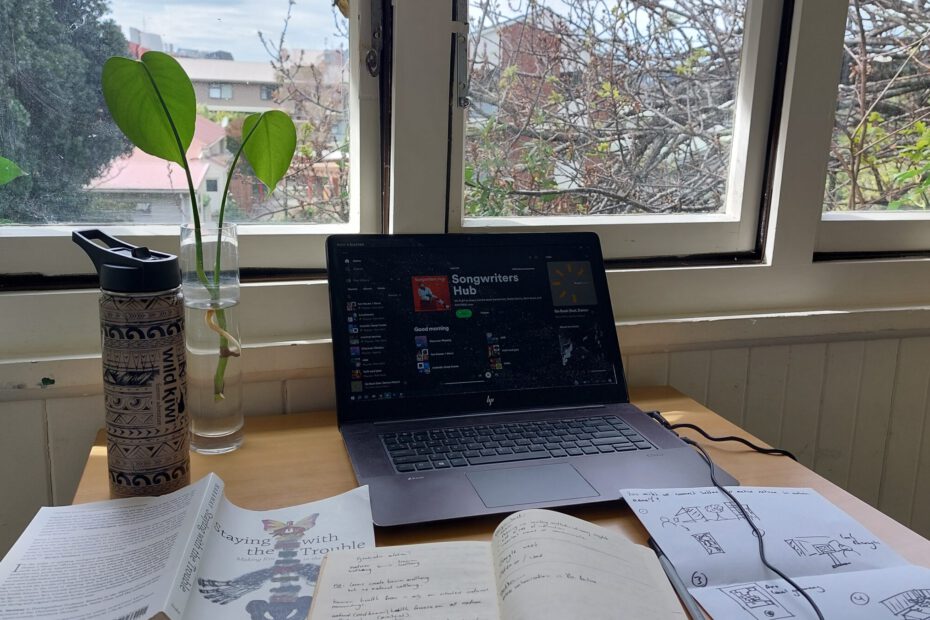
Inclusive design / Intercultural competence / Human-centered UX / Decolonized UX methodology / Place-based identity design
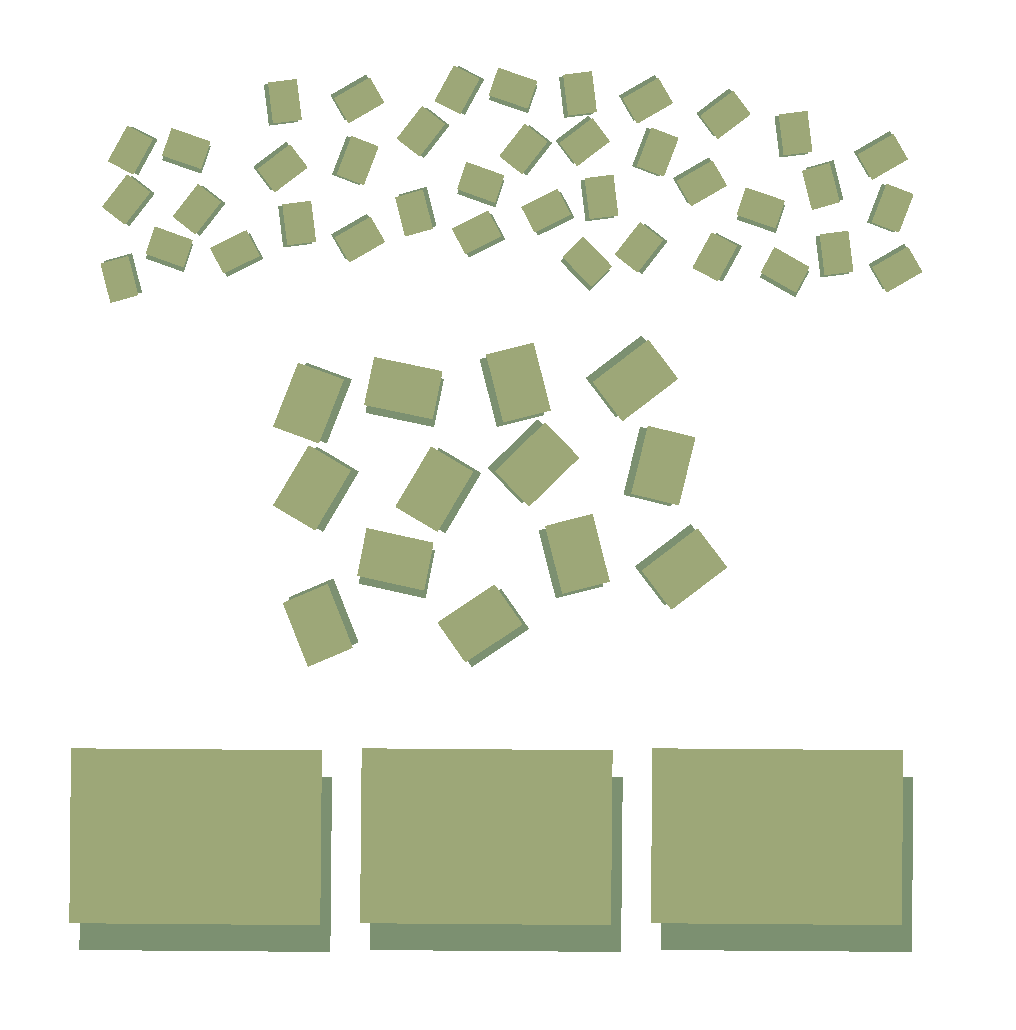
Human-nature relationship in urban Wellington
To understand how urban Wellington residents experience and relate to nature, I conducted a qualitative research process. I established a theoretical foundation, then designed and ran five semi-structured interviews targeted at diverse participants. I used affinity mapping to synthesise 14 key findings, which I translated into three actionable insights. From this analysis, I developed six design principles that connected behavioural patterns, emotional drivers, and environmental values.
Design Principles
Value of nature
People already have basic knowledge and understanding of the benefits of interacting with nature, but need help valuing this nature.
Local connection
Focus on connecting people to nature close to home.
Make actionable
Supply people with knowledge and tools that support them to engage with nature around them in their daily lives.
Responsibility
Explore ways to aid people on how to give back to nature in their daily lives due to the positive relationship they experience.
Usability
Create an easy, fun, and quick intervention to make the experience more motivating to do.
Standalone
Most people connect to nature alone or with close friend and/or family, design for this accordingly.
Design to transform human-nature relationship in urban areas
Building on the research insights, I went through the full design process from ideation to a validated concept. I explored theoretical frameworks, generated multiple concepts, and iterated through convergent and divergent thinking to refine the final direction. The result was Floradex, an app that helps urban residents build meaningful relationships with local flora.
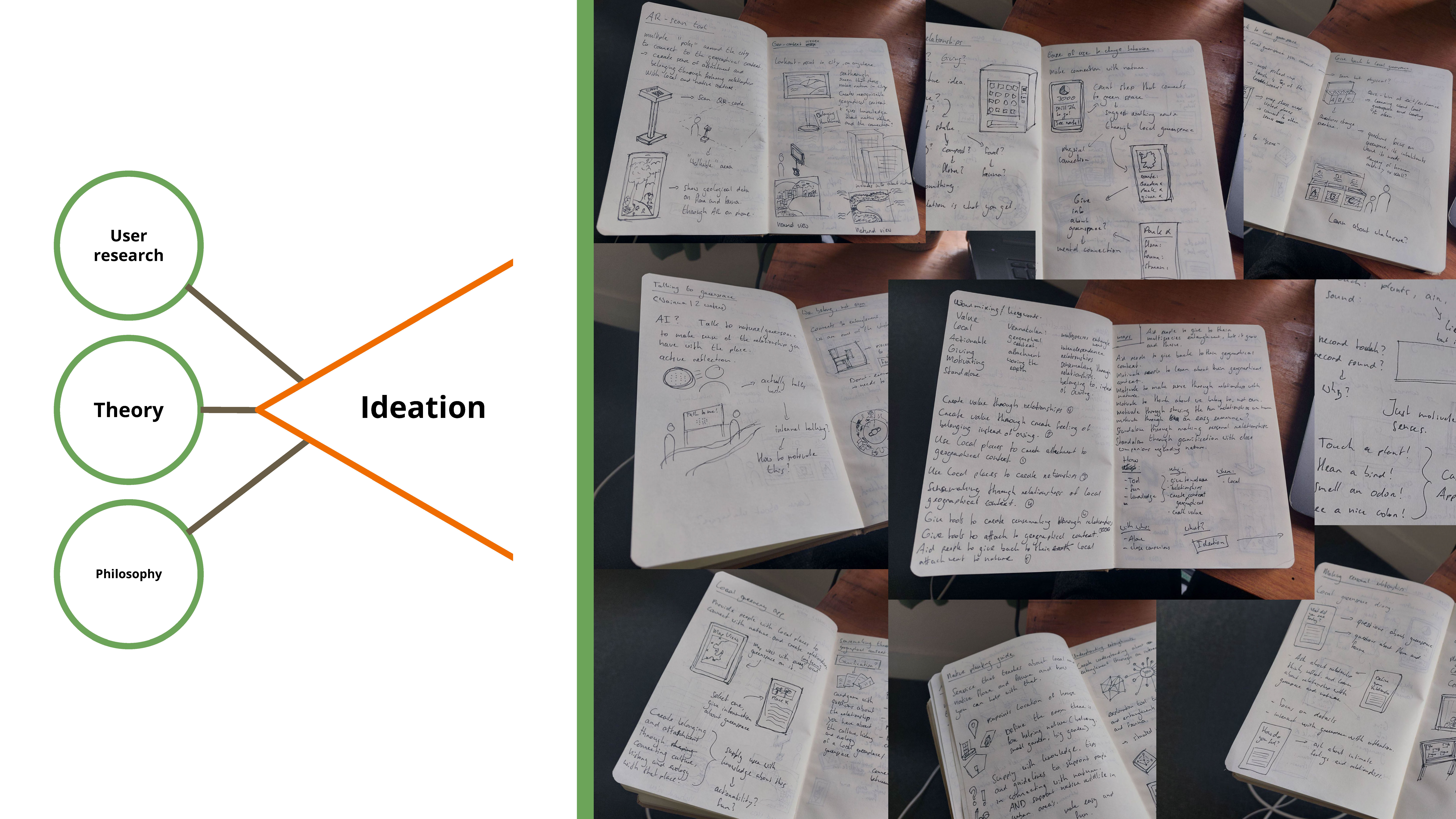
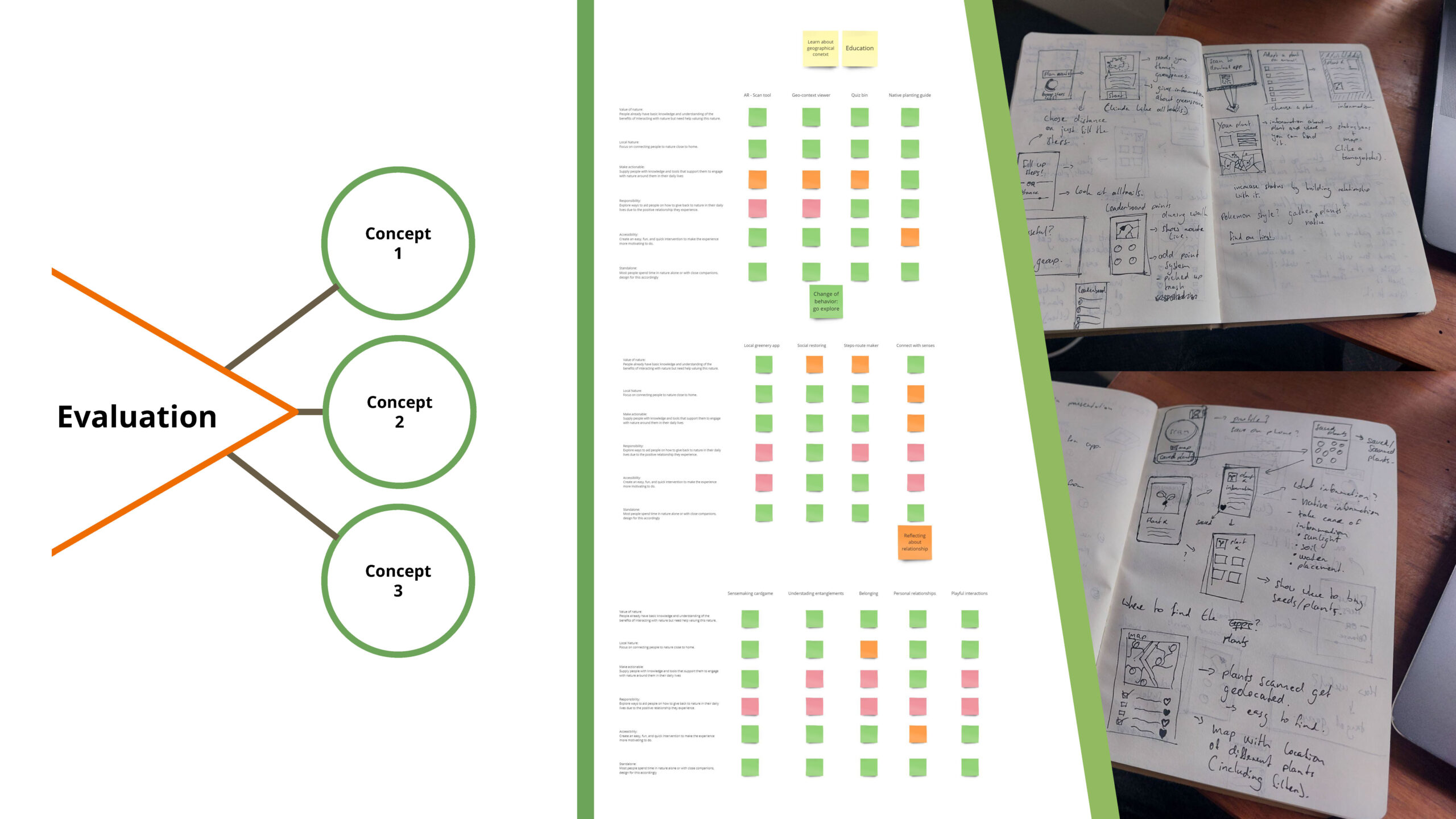
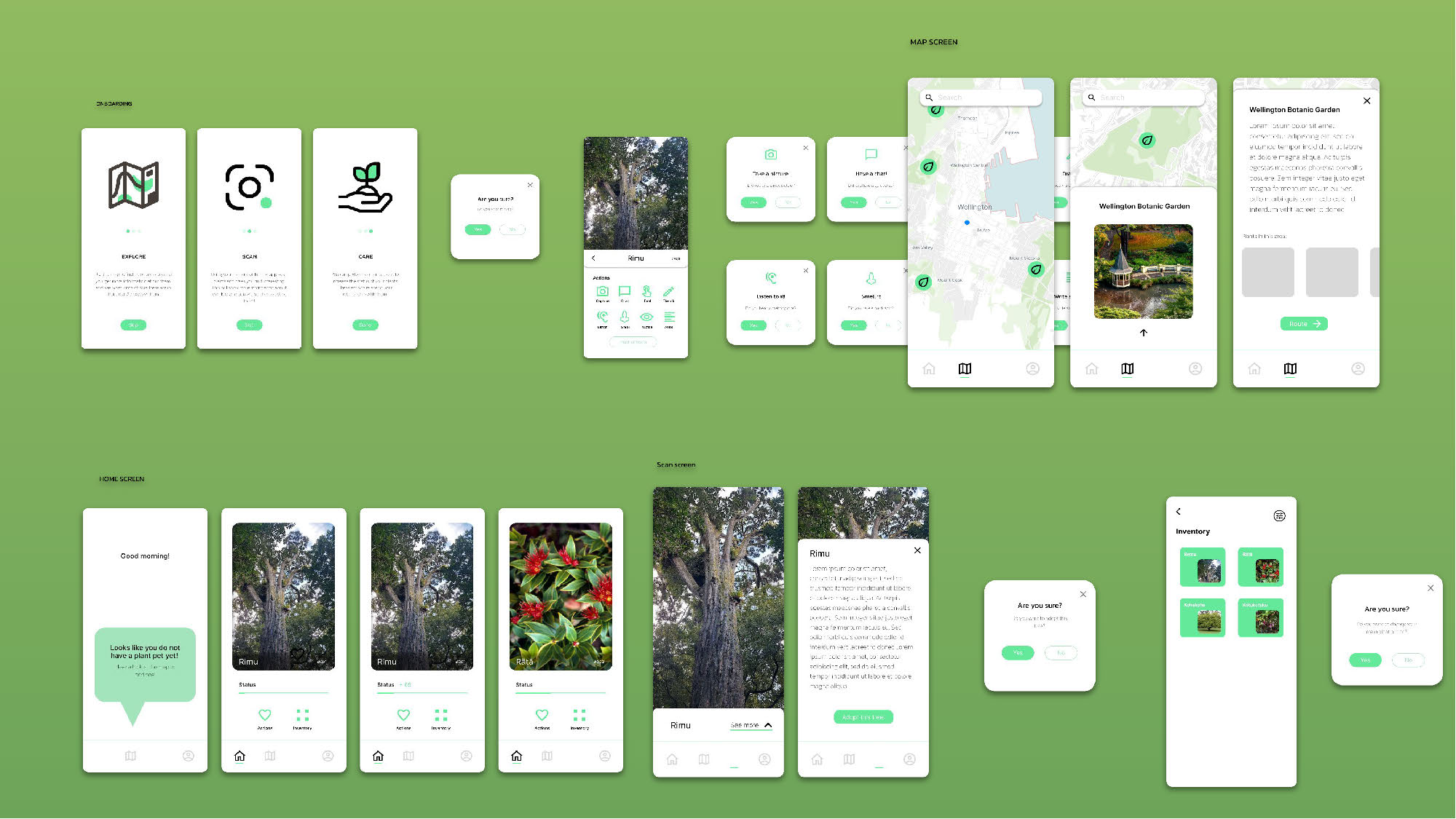
Evaluation
I created prototypes that included core features such as plant discovery, adoption, and care-logging, then designed and conducted usability tests to evaluate clarity, interaction flow, and accessibility. Feedback from these evaluations directly informed further design refinements.
Results of Evaluation
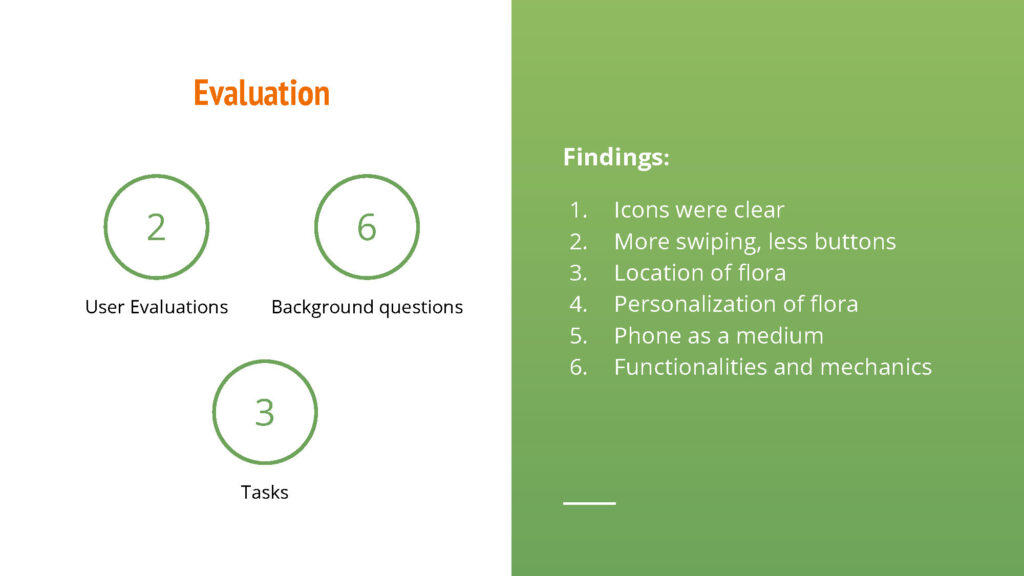
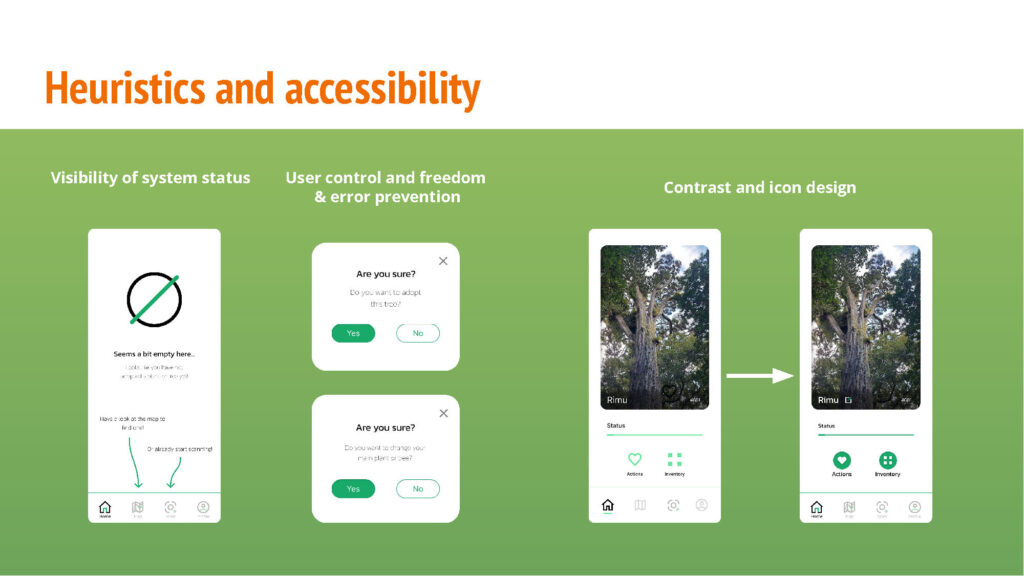
Connecting to local nature through exploration, education, and caring through Floradex
Discovering and defining the design space
In this project I investigated the human-nature relationship within urban Wellington through a mixed-methods research approach. I began with extensive desk research to frame the inquiry, focusing on the mental and physical wellbeing benefits of nature as well as the ecological dynamics of human-nature coexistence in cities. This foundational knowledge informed the design of semi-structured interviews. The interviews explored personal experiences with nature, participants’ perceived value of it, and their emotional or ethical relationships to the natural environment.
I transcribed and anonymised these interviews and applied affinity mapping to identify key patterns and insights. This process surfaced recurring themes, such as a preference for “natural” over designed green spaces, a sense of nature being taken for granted, and a desire to reconnect and give back to nature. These insights informed a set of six actionable design principles aimed at fostering stronger, more mindful connections between urban dwellers and the natural world around them. The methods I used combined human-centered and post-human design thinking, providing both empathetic and ecological perspectives to guide potential interventions
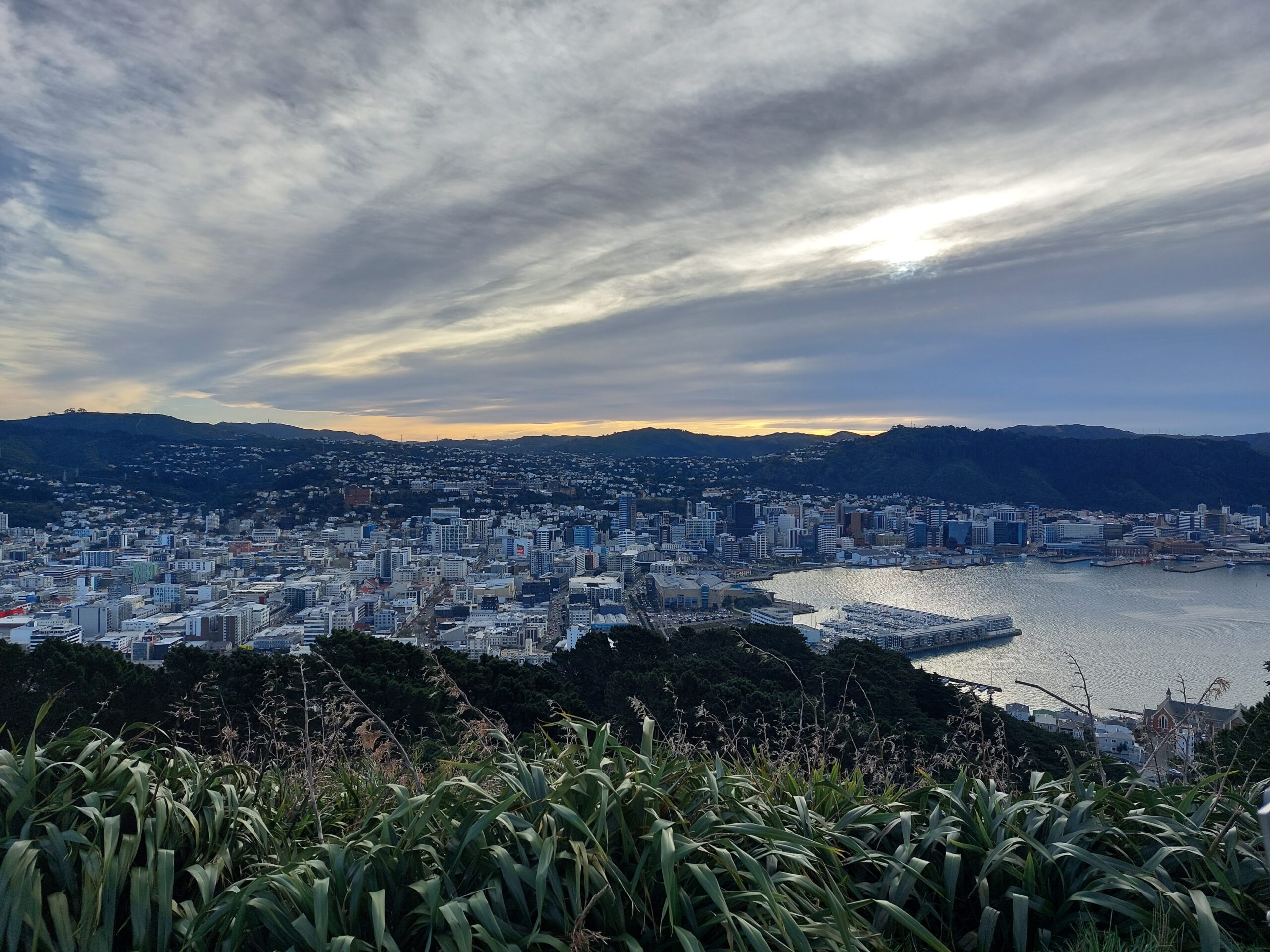
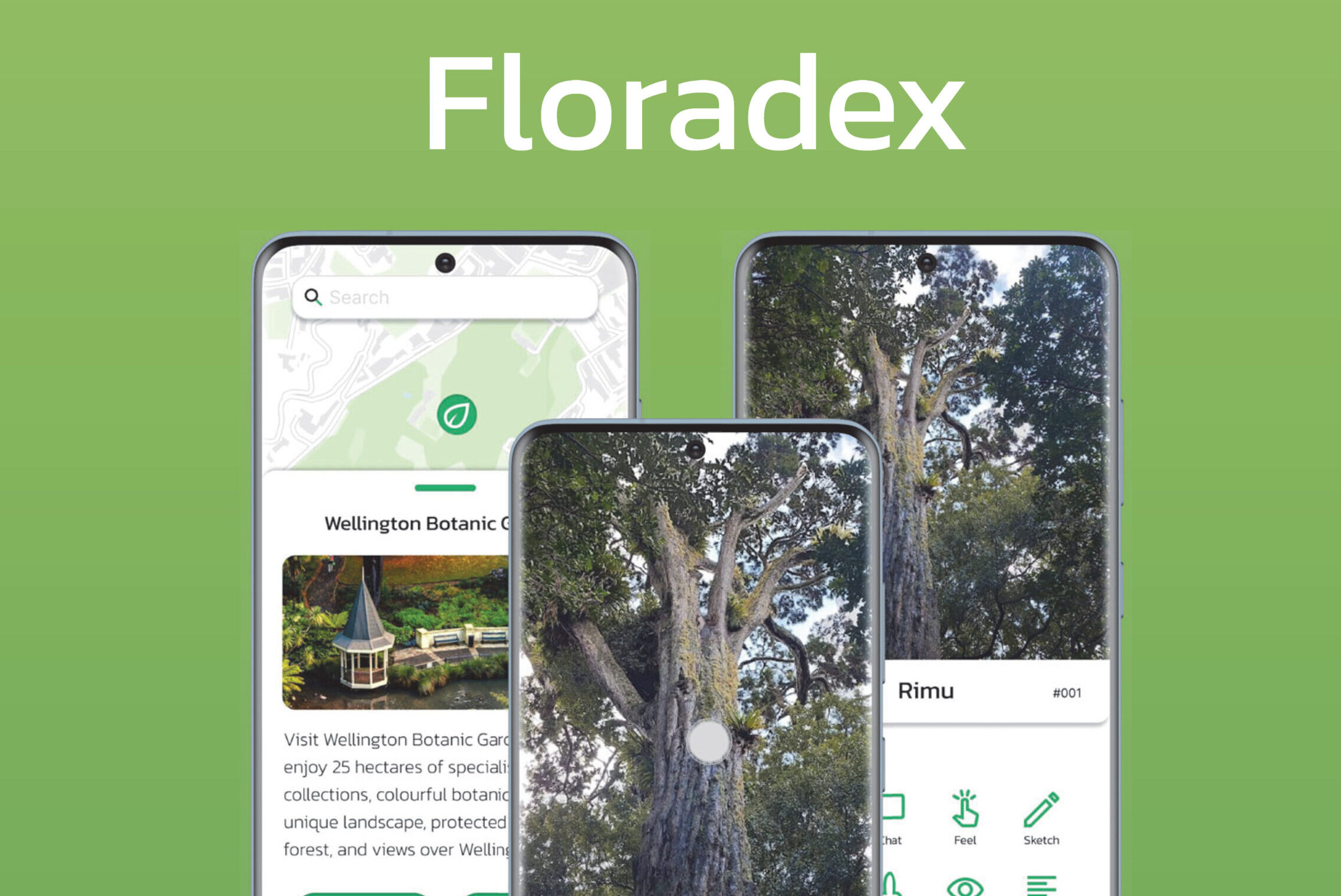
Develop and deliver the concept
I introduced Floradex, a UX concept designed to transform the human-nature relationship in urban environments like Wellington. Grounded in ecological philosophy, architecture theory, and user research, the project began with a clear design challenge: how to reconnect city dwellers with nature in meaningful, lasting ways. Drawing on insights from Māori philosophy, thinkers like Donna Haraway, and vernacular design principles, I developed a three-part interaction journey that encourages users to explore nearby green spaces, adopt local flora by scanning and learning about them through the app, and then build a relationship with those plants through personalized care routines.
Throughout the development process, I moved through iterative phases of ideation, prototyping, and evaluation. I created and tested multiple design concepts, ultimately refining the experience based on user feedback gathered through usability tasks and heuristic evaluations. Key insights from user testing influenced the app’s mechanics, such as simplifying navigation, emphasizing swiping over buttons, improving plant localization features, and enhancing personalization. The final concept leverages familiar mobile interactions to make nature connection feel accessible and rewarding, while also embedding opportunities for reflection and responsibility.
